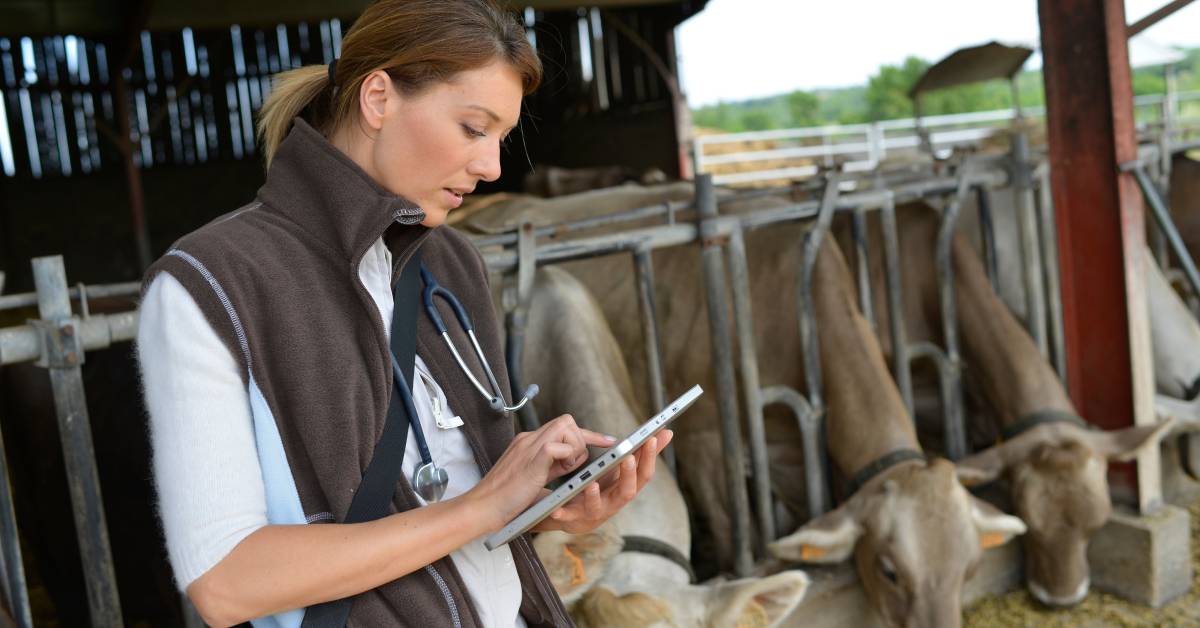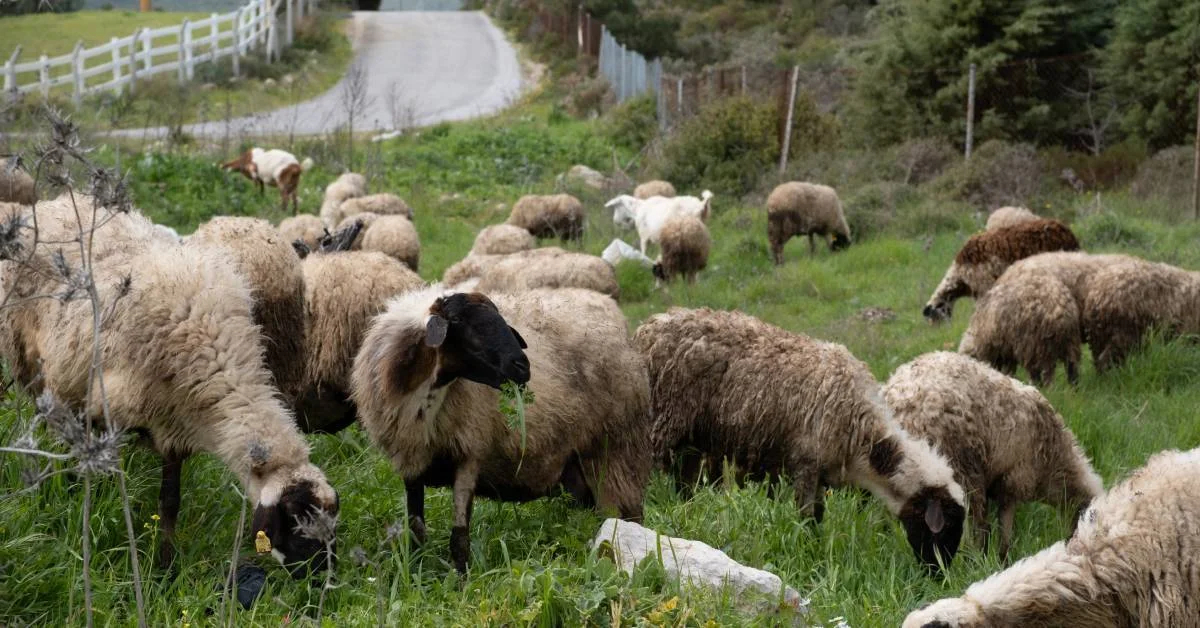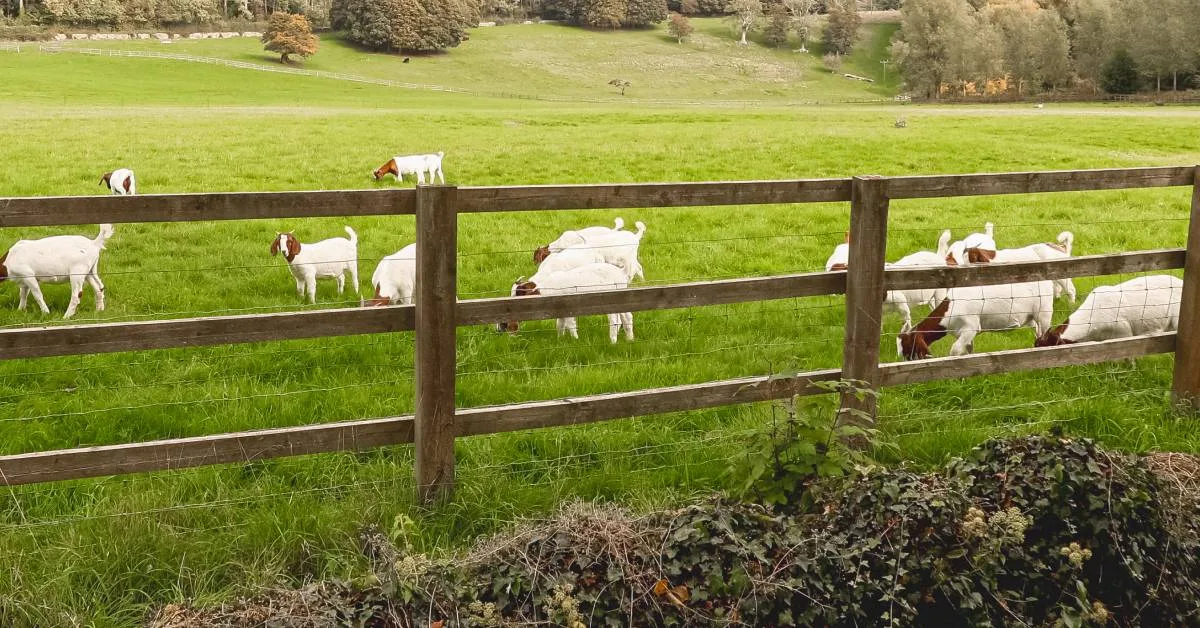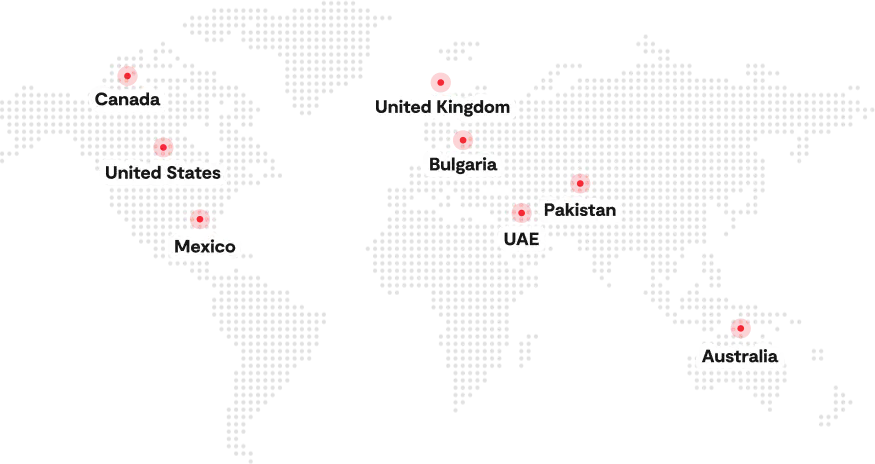Spotting illness early in cattle isn’t always easy. You might notice a steer lagging at the bunk or standing off in the corner, but in a crowded pen, subtle signs like these are easy to miss. When disease spreads, it spreads fast. Bovine respiratory disease alone accounts for nearly 70% to 80% of feedlot morbidity, often hitting before there’s time to respond.
Even with good pen riders and regular health checks, timing is everything, and that’s where most operations struggle. It’s not a lack of care; it’s the simple fact that eyes on cattle, no matter how sharp, can’t catch every early change, especially across hundreds and thousands of heads.
To tackle this, many feedlots are adopting a more consistent, data-driven approach, using systems that monitor health indicators and identify concerns early, before they escalate. With improved cattle health monitoring, teams can intervene sooner, treat more precisely, and prevent larger setbacks down the line.
This blog explores how feedlot health monitoring software supports daily decision-making in feedlots, which features actually make a difference, and how AI is helping identify disease outbreaks earlier than ever.
The Real Challenges of Disease Detection in Feedlots
Feedlots run on precision, like cattle feed rations, rotations, and schedules, but health doesn’t always follow a set pattern. Illness can surface quietly, drift from one pen to the next, and gain ground before anyone sees it coming. The conditions that make feedlots efficient, such as tight quarters, shared water, and high turnover, also make them vulnerable to the rapid spread of disease outbreaks.
Diseases That Are Easy to Miss Until They Spread
While every feedyard has protocols in place, some conditions continue to slip through simply because they begin quietly. Understanding where these diseases hide in plain sight might be a great challenge in feedlots but it is the first step toward catching them earlier, before they start affecting performance at scale.
1. Bovine Respiratory Disease (BRD):
Bovine respiratory disease is the most common and costly illness in feedlots, but its early signs are quite vague, especially in high-risk or newly received cattle. Reduced rumination, slower bunk attendance, or even subtle posture changes can be the only early indicators. By the time coughing or nasal discharge appears, lung damage may have already begun. Stress from transport or weather often masks symptoms, allowing BRD to spread before the first case is even diagnosed.
2. Lameness
Lameness isn’t always a single issue. It’s a symptom linked to several underlying causes, including foot rot, sole abscesses, joint infections, or injuries from handling or flooring. Early cases rarely present as obvious limping. Instead, cattle may hesitate at the bunk, shift weight frequently, or isolate signs that are easy to misread, especially in larger pens. With the rise of healthcare app development, feedlot health monitoring systems that track step count, gait patterns, or activity levels can help flag lameness earlier.
3. Digestive Disorders (Acidosis & Bloat)
Digestive issues, such as subacute acidosis or bloat, can affect cattle performance long before they exhibit clinical signs. Early indicators, such as inconsistent intake, reduced cud chewing, or slight drops in gain, are hard to spot without close, daily tracking. These issues are frequently tied to ration changes, cattle heat stress, or sorting behavior around the bunk, all of which are common in fast-paced feedlot systems.
What Makes Disease Outbreaks Spread So Quickly
Disease outbreaks in cattle often don’t start with a clear event. They build quietly, sometimes from a single animal that goes unnoticed. What allows a small issue to snowball into a larger health problem isn’t just the disease itself, but how the environment and daily routines unintentionally help it spread. Here are some of the core conditions in high-density cattle operations that make disease transmission hard to stop once it begins.
- High Stocking Density: The average U.S. feedlot typically houses over 100–140 sq. ft. per animal, which can limit airflow and increase contact rates.
👉Tip: Improve pen spacing where possible and rotate pen occupancy to reduce the buildup of pathogens. - Commingling from Multiple Sources: Mixing cattle from different origins increases pathogen diversity and BRD risk, especially in the first 14–21 days post-arrival of cattle in feedlot.
👉Tip: Group cattle by source and risk level when receiving; implement staggered arrival and processing protocols. - Shared Water and Feed Access: Troughs and bunks act as transmission points for oral and respiratory pathogens. Shared water may spread organisms like E. coli and Salmonella.
👉Tip: Routinely clean and disinfect shared equipment, and consider using feedyard maintenance software to schedule and track sanitation tasks - Delayed or Inconsistent Cattle Health Monitoring: Many issues escalate because early signs (off-feed behavior, posture, gait) go unnoticed during busy shifts or weekends.
👉Tip: Use automated cattle health monitoring tools to track real-time behavior, activity, and intake patterns for earlier alerts.
Why Traditional Cattle Health Monitoring Falls Short
Most feedlots still rely on experienced pen riders and handwritten records to stay ahead of health issues. That system works until it doesn’t. When cattle are moving in and out fast, schedules are tight, and labor is stretched thin, the cracks start to show. Those small gaps in consistency are often where disease takes hold.
| Challenge | Why It’s a Problem |
| Reliance on Human Observation | Even skilled pen riders can’t be everywhere. Early signs like reduced activity or mild lameness often go unnoticed. |
| Inconsistent Recordkeeping | Paper logs are prone to errors, delays, and missing data, making it hard to track trends or coordinate across teams. |
| Limited Visibility Between Checks | Illness can escalate rapidly between visual rounds, missing the ideal window for early treatment or isolation. |
| Delayed Response to Subtle Changes | Metrics like feed intake, rumination, or step count shift before visible symptoms, but aren’t practical to track manually. |
How Cattle Health Monitoring Software Helps Manage Disease Outbreaks
Health monitoring, especially in feedlot, isn’t just about tracking symptoms; it’s about making better decisions when timing is tight and the workload is already heavy. When multiple pens are under watch and treatments are in motion, the risk isn’t just missing a sick steer; it’s losing track of who was treated, when, and whether it worked.
Software for monitoring cattle health becomes important where paper records and verbal updates fall short. It keeps health data connected by animal, by pen, by day, so nothing gets overlooked, repeated, or delayed.
Key Features of Cattle Health Monitoring Software
Many cattle operations already have systems in place to manage health, but when things get busy, small gaps can add up. The software helps fill those gaps by keeping records organized, alerting on time, and making protocols easier to follow.
Folio3 AgTech’s Feedlot Management Software is built to support daily operations across intake, performance, and animal health. Its dedicated Health Management module helps crews track pulls, monitor treatments, and stay ahead of compliance.

- Real-Time Health Observations and Mobile Logging: Pen riders and processing crews can log symptoms, treatments, and behavioral changes directly from the yard using mobile devices. This ensures that nothing gets delayed or lost, and supervisors have immediate access to up-to-date health reports.
- Individual Animal and Lot-Level Tracking: Every animal has a comprehensive digital health record, including a detailed diagnosis history, medication records, retreatment records, and outcomes. Managers can filter by pen, tag, or risk group to make informed decisions faster.
- Automated Alerts and Threshold Monitoring: Custom rules can flag changes in feed intake, temperature, or activity patterns, triggering alerts before problems become visible. This helps prioritize checks and isolate potential cases early.
- Treatment and Withdrawal Compliance: The software ensures that proper medication logs, dosages, and withdrawal times are tracked, thereby reducing the risk of cattle compliance failures and ensuring that animals are cleared before shipping.
- Group-Level Health Trends and Analytics: The system aggregates data across pens and lots to highlight trends, such as rising BRD cases, repeated pulls, or mortality clusters, allowing managers to respond proactively instead of reactively.
- Integrated Protocols and Staff Consistency: Built-in treatment protocols help standardize decisions across shifts and staff. The software applies them based on weight class, risk profile, or vaccine history, ensuring that every pull follows approved guidelines, even when different teams are on rotation.
How Elanco Partnered With Folio3 To Help Farmers Tackle Tick-Borne Disease
While much of health monitoring focuses on respiratory and digestive issues, tick-borne diseases in cattle remain a serious but often overlooked threat, especially in tropical regions. Recognizing this gap, a global leader in animal health, Elanco, partnered with Folio3 to support farmers with a localized, digital-first approach to tick prevention. For many producers, the challenge wasn’t just treatment. It was knowing how to prevent infestations, when to act, and where to access trusted tick control solutions.
The Challenge
Smallholder farmers had limited access to reliable tick-control information and struggled to track which cattle were treated and when. Without organized data, treatment quality varied, and disease outbreaks continued unchecked.
The Solution
Folio3 AgTech delivered a cross-platform educational and tracking app. Farmers could record tick sightings, access treatment guidelines, and schedule repeat applications. The mobile-first design worked offline and supported multiple local languages.
The Impact
The solution helped Elanco enhance communication, increase awareness of tick-related illnesses, and support improved outcomes in beef and dairy production. Farmers gained access to consistent, field-level support while earning rewards for staying engaged.
How AI Enhances Health Monitoring In Cattle
In cattle health management, timing matters. A delay of even 12–24 hours in spotting illness can mean the difference between a quick pull and a larger pen-wide outbreak. That’s why more operations are turning to AI and sensor-based systems, not as a replacement for pen riders, but as a second set of eyes that never blinks.
Modern smart cattle health monitoring systems use wearable devices like ear tags, boluses, or collars to gather ongoing health data. These systems are built on an IoT-based cattle health monitoring system, meaning the data is captured wirelessly and in real-time. But collecting data alone isn’t what makes these systems worthwhile.
Artificial intelligence helps in processing this constant stream of information and flagging what matters. Instead of overwhelming the team with numbers, it looks for patterns, what appears normal for a specific animal or pen, and flags early warning signs when something is off.
Here’s where it helps:
- Early BRD detection: Subtle changes in temperature, feed visits, and step count, detected through sensors, can signal early respiratory issues. Studies show AI can flag likely BRD cases up to 36 hours before symptoms are visible.
- Lameness prediction: Computer vision technology uses motion data to identify changes in how cattle move. Even before visible limping starts, reduced activity or altered gait patterns can be flagged for follow-up.
- Heat stress monitoring: In hotter climates or during summer, combined changes in rumination, restlessness, and rising body temperature can help detect stress early, especially in finishing cattle.
- Digestive disorders (like acidosis): Rumination collars and boluses can spot changes in chewing time or pH shifts in the rumen, well before gain drops or bloating becomes visible.
These cattle health monitoring systems don’t replace decision-making. They help crews focus where it counts. When something’s off, it gets flagged early, so teams can pull the right animal, treat sooner, and keep the rest of the pen on track.
Conclusion
In a high-turnover feedlot, delays in health decisions carry a cost, whether it’s lost gain, increased pulls, or treatments that come too late. What’s clear is that relying solely on visual checks and paper records isn’t enough when diseases like BRD or acidosis move fast and start quietly.
What cattle health monitoring systems offer isn’t automation, it’s clarity. They help crews stay organized, act sooner, and make better decisions across pens and shifts. The real advantage isn’t in having more data, but in knowing what needs attention before it starts affecting performance.
FAQs
What Does Cattle Health Monitoring Software Actually Track?
Most systems track individual and group-level data such as feed intake, temperature, step count, bunk visits, treatments, and recovery progress. Some also allow pen riders to log visual observations directly from the yard.
Can These Systems Detect Disease Before Symptoms Appear?
They can help surface early warning signs, like reduced movement or intake, linked to issues like BRD, lameness, or acidosis. When paired with sensors or AI, they can often flag concerns before clinical symptoms are visible.
Do I Need Special Equipment to Use These Tools?
Not always. Basic software works with manual inputs from pen riders and crews. More advanced setups use wearable IoT devices like rumen boluses, ear tags, or activity trackers for automated data capture.
How Does This Solution Help During Busy Seasons?
It keeps health records centralized and up to date, so nothing gets missed or double-treated. Alerts also help crews prioritize which pens or animals to check first.
Is Cattle Health Monitoring Software Difficult to Implement?
Most systems are designed to fit into existing workflows. Mobile logging, pre-set treatment protocols, and API integrations make it easy to roll out across teams without disrupting operations.




